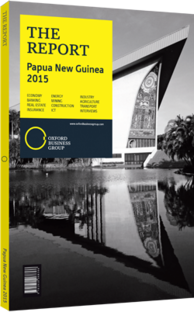PNG decentralises power and improves local control
Ever since Papua New Guinea gained independence from Australia in 1975, its wide diversity in language, ethnicity, culture and geography has created a tendency towards decentralised institutions. At the same time, however, there has been an opposite tendency: towards more control over local affairs by national authorities. To strike a balance between the levels of government – national, regional, provincial, district and local – is thus among PNG’s main political and economic challenges.
Devolution Movement
In 1977 Parliament passed the Organic Law on Provincial Government, establishing directly elected provincial assemblies. These in turn would elect provincial governments in the same way as the national parliament elected the national one – with a cabinet and a premier, according to the Westminster model. By 1995, however, a consensus had emerged that the system needed changing. This led to the Organic Law on Provincial Government and Local Level Government (OLPGLLG), which instead set up provincial governments headed by elected provincial governors, who would be selected from among the regional members of the national parliament.
Smaller Units
Local level governments (LLGs) – sub-provincial, sub-district units – gained in influence under the reforms; their presidents also sit in the new provincial legislature (see Country Profile chapter). Meanwhile, a new Joint District Planning and Budget Priorities Committee, run by national MPs, strengthened Parliament’s control over district funding and programmes, as well as funding at other levels. The OLPGLLG thus put much of the onus for execution on the LLGs while shifting funding powers to Parliament. Capacity-building at the LLG level – for both physical infrastructure and human resources – needed to be a top priority if the system was to succeed.
Recognising this, in 2012 the central government increased funding to provinces, districts and LLGs. In the 2013 budget, it allocated these institutions development grants of some $700m, representing 15% of national budget spending, up from 5% the year before.
Challenges
The OLPGLLG system has not been without criticism. Since national MPs have more say over budget allocations at all levels, funds have tended to go towards their particular constituencies rather than towards broader strategic goals. Some say the model has weakened accountability, accusing Provincial Administrators – the civil service arm of local governments – of failure to perform their role responsibly. LLGs also often have their seat of power far from urban and communications centres, making local service delivery more expensive and complex. Reforms in 2008 aimed at improving LLG finances by diverting PGK10m ($3.8m) in District Services Improvement Programme (DSIP) funds to the LLGs had the unintended result of increasing political competition at the LLG level. Funding delivery for the DSIP and its counterparts at the provincial and LLG levels has not always been smooth, with some local authorities claiming long delays in payment.
Special Case
A more radical devolution has taken place in Bougainville. Armed separatist conflict in the former province led to an eventual settlement and the creation, after elections in 2005, of the Autonomous Government of Bougainville (ABG). The ABG now manages its own resources, with an executive arm headed by the president, a single chamber house of representatives and an independent judicial system. The political groundwork is being laid for a referendum on full independence which, according to the agreement that ended the conflict, must occur before 2020.
Current Developments
In 2013 the District Authorities Bill strengthened districts’ control over development funding. The 2015 budget showed a shift away from LLGs, reducing funding for these but increasing it for provinces and districts and instituting more central monitoring of projects at the latter two levels. Decentralisation is thus very much a work in progress, with the elusive balance still being sought. Meanwhile, governors and the opposition have voiced demands for more regional autonomy. How the government responds to this will be decisive in the months and years ahead.
You have reached the limit of premium articles you can view for free.
Choose from the options below to purchase print or digital editions of our Reports. You can also purchase a website subscription giving you unlimited access to all of our Reports online for 12 months.
If you have already purchased this Report or have a website subscription, please login to continue.

